|
 Entoloma uliginicola Entoloma uliginicola
BiostatusPresent in region - Indigenous. Endemic
Images (click to enlarge)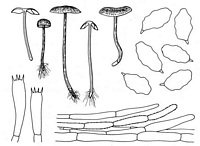
Caption: Fig. 182: Entoloma uligincola Hk. (type): carpophores, spores, basidia, cuticle. | 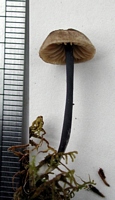
Caption: fruitbody
Owner: J.A. Cooper | 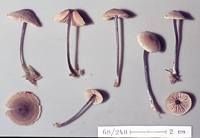
Caption: 68/248: Entoloma ULIGINICOLA
Owner: Egon Horak | 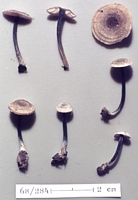
Caption: 68/284: Entoloma ULIGINICOLA
Owner: Egon Horak | 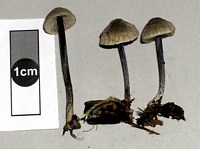
Owner: J.A. Cooper | 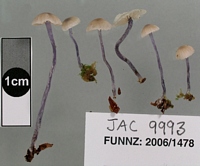
Caption: FUNNZ photo
Owner: J.A. Cooper | 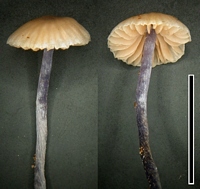
Caption: scale=1cm
Owner: J.A. Cooper | 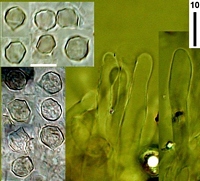
Caption: spores and cheilocystidia
Owner: J.A. Cooper | 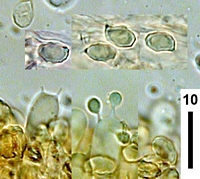
Caption: rugulose spores and 2-spored basidia
Owner: J.A. Cooper |
Article: Horak, E. (1980). Entoloma (Agaricales) in Indomalaya and Australasia. Beihefte zur Nova Hedwigia 65: 352 p.
Description: P. 10-20 mm, hemispheric or convex when young becoming plane, centre often depressed
to subumbilicate in overmature specimens; white or pale grey-brown with distinct blue
tinge; dry, estriate, not hygrophanous, coarsely fibrillose, sometimes concentrically zonate,
often rimose and split towards margin. L. 8-16(-3), adnate to adnexed, emarginate in
mature carpophores, ventricose, -5 mm wide: whitish to pale argillaceous with blue tinge,
becoming argillaceous-pink, edge concolorous, even. St. 30-60/1,5-2 mm, cylindric,
slender, equal; grey-blue, white towards the base to which conspicuous white rhizoids or
strigose hairs are attached; dry, smooth at apex, coarsely fibrillose to hairy towards base,
fistulose, single in groups. Context blue, especially in upper-portion of stipe. S farinaceous
or spermatic. Sp. 9-12/5,5-6 µm, multiangled. Bas. 30-38/7-10 µm, 4-spored. Ch. and pl.
absent. Cuticle a cutis of repent, cylindric hyphae (5-15 µm diam.), hyaline, thin-walled
membrane, with brown PE, - OH, - CC.
Habitat: Habitat. - Among moss (Sphagnum) in swamps. - New Zealand.
Notes: In New Zealand this is a very common species in swampy localities called "pakihi". Apart
of its peculiar habit this fungus is immediately recognized by the pale blue coloured
pileus and stipe and the multiangled spores which remind of those known from
Rhodocybe (Horak 1979c, 1979d).
|